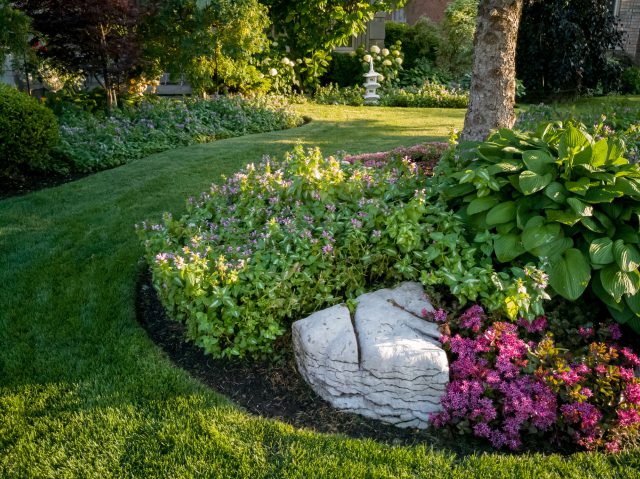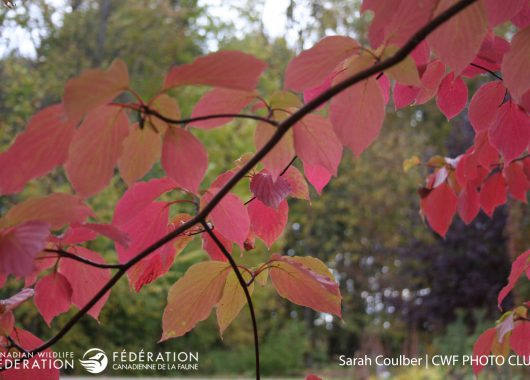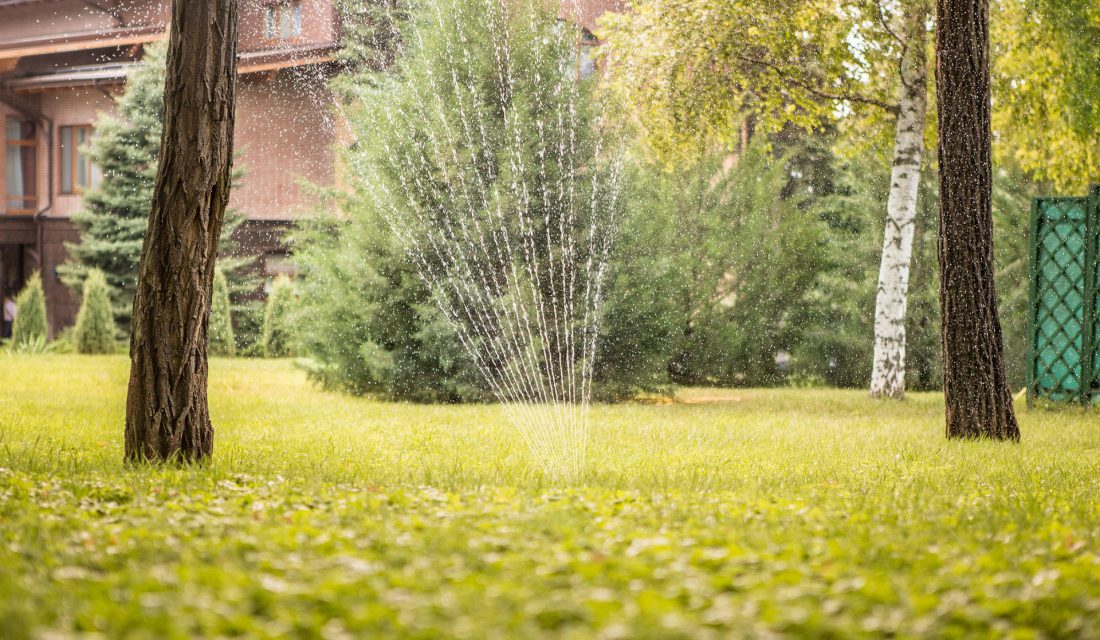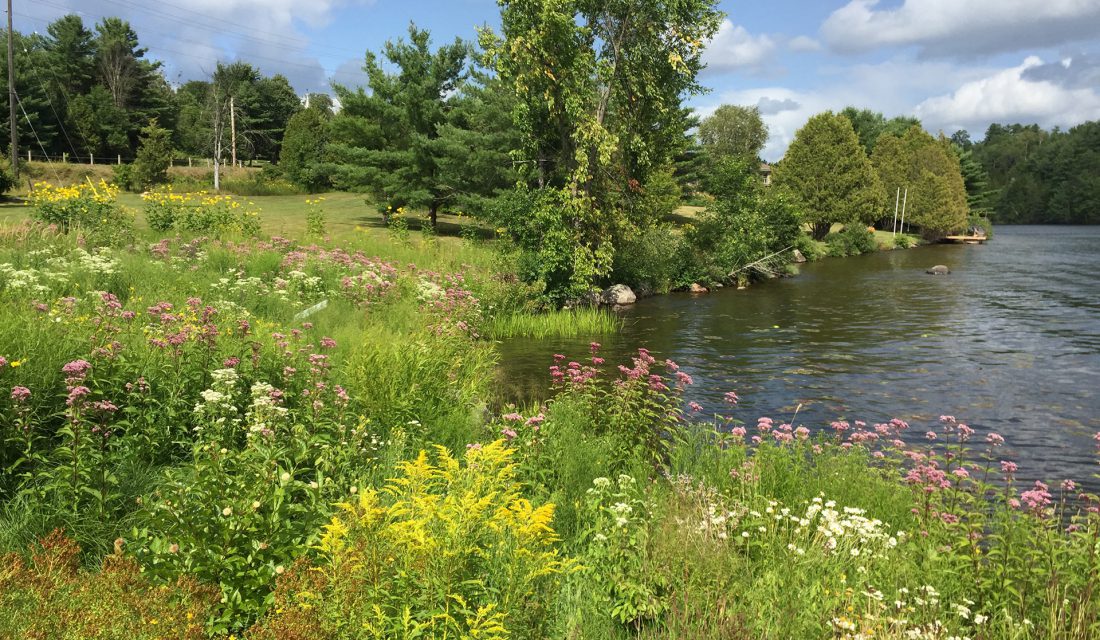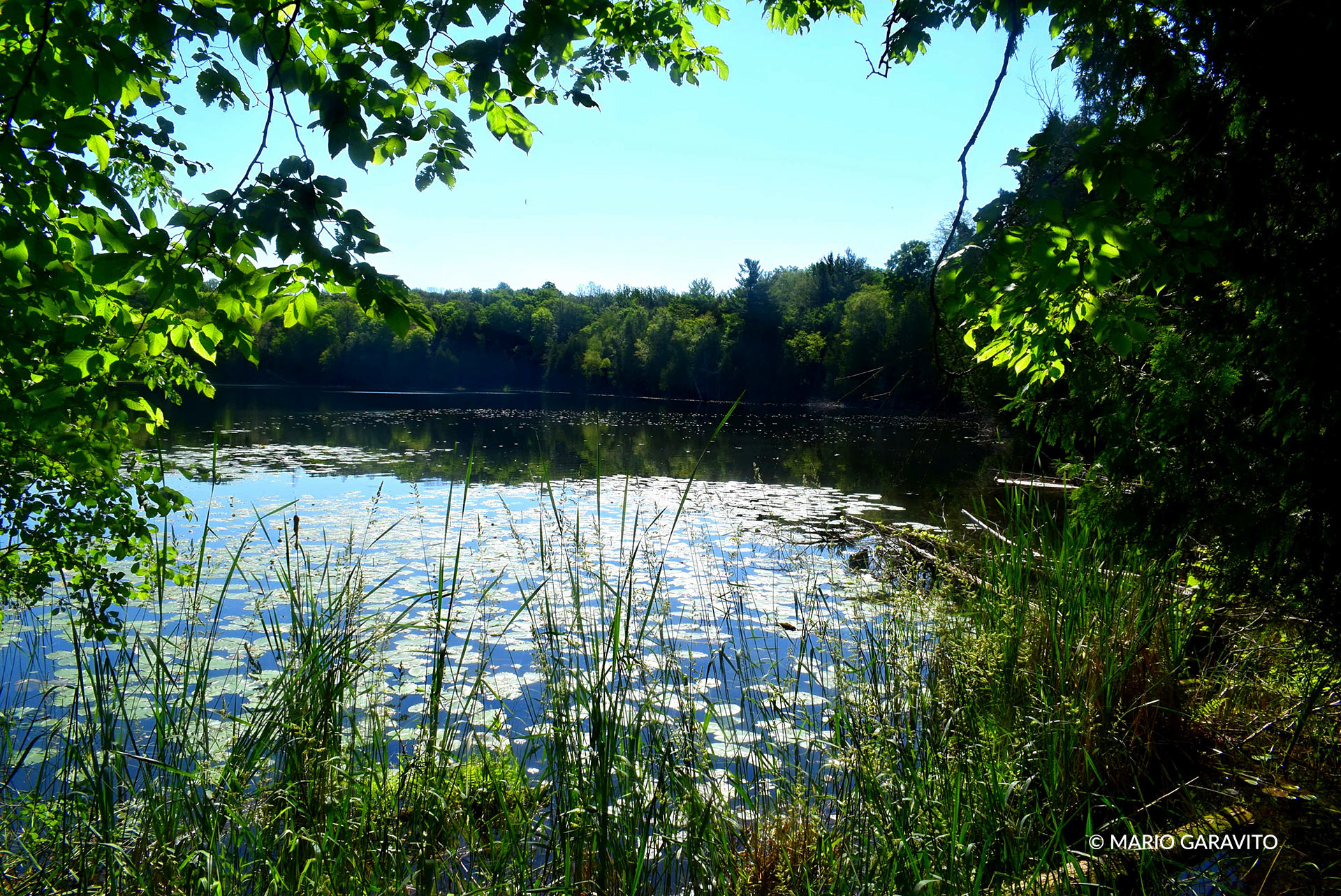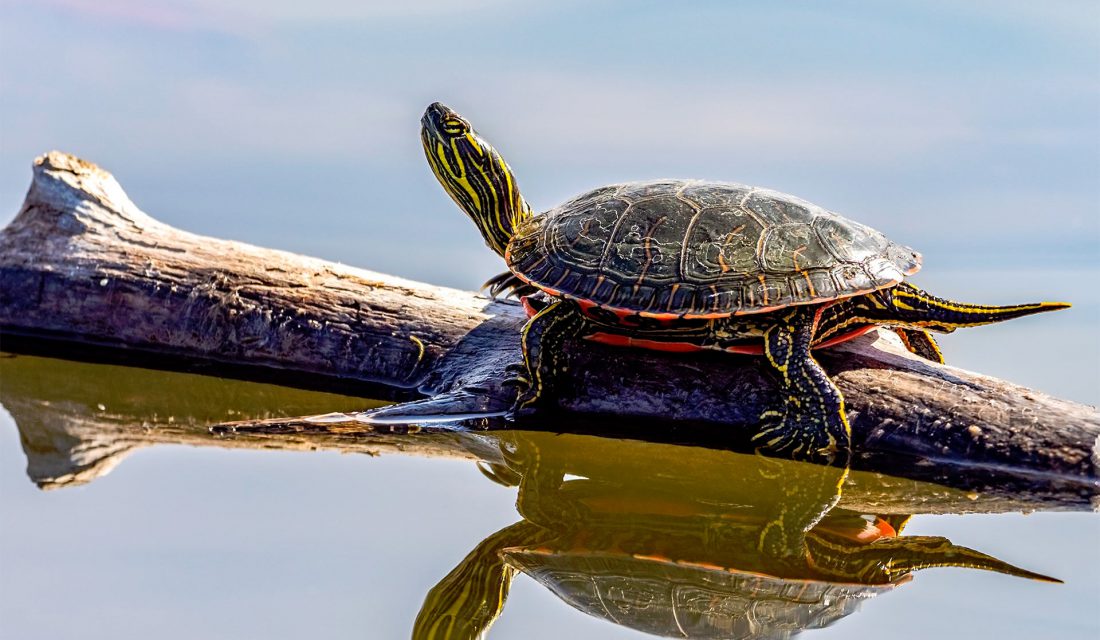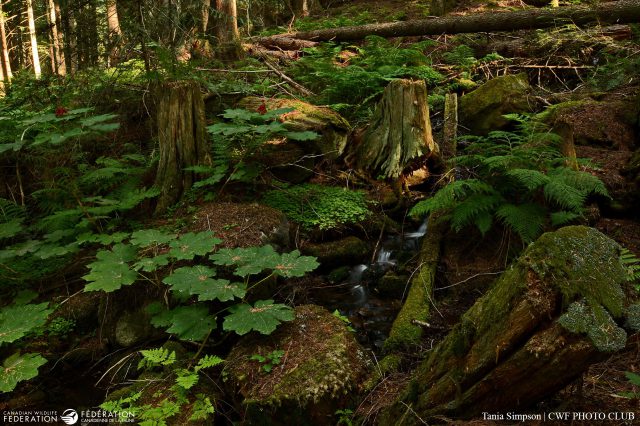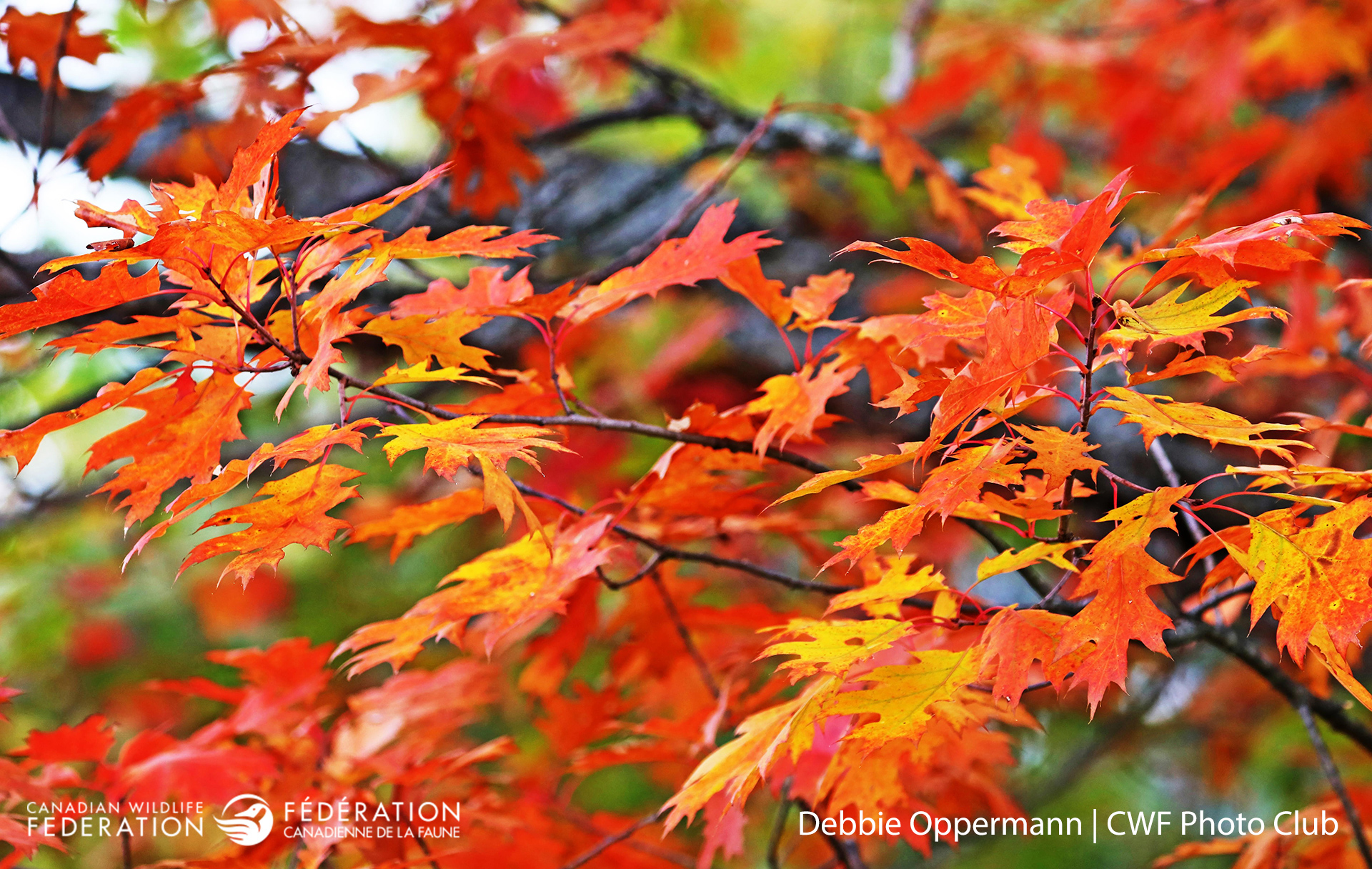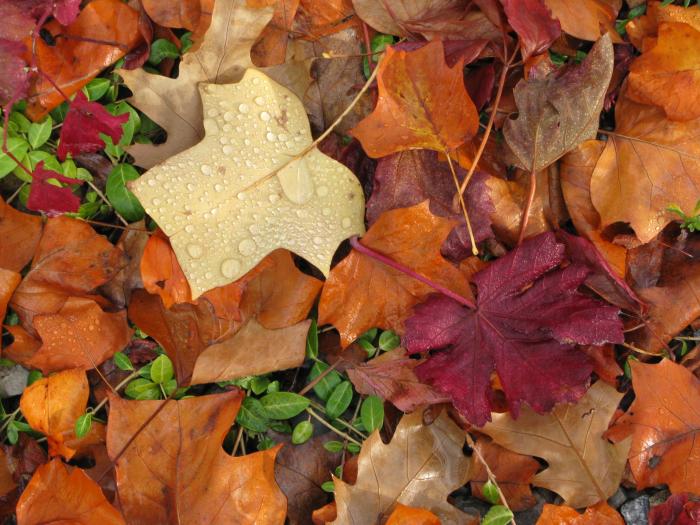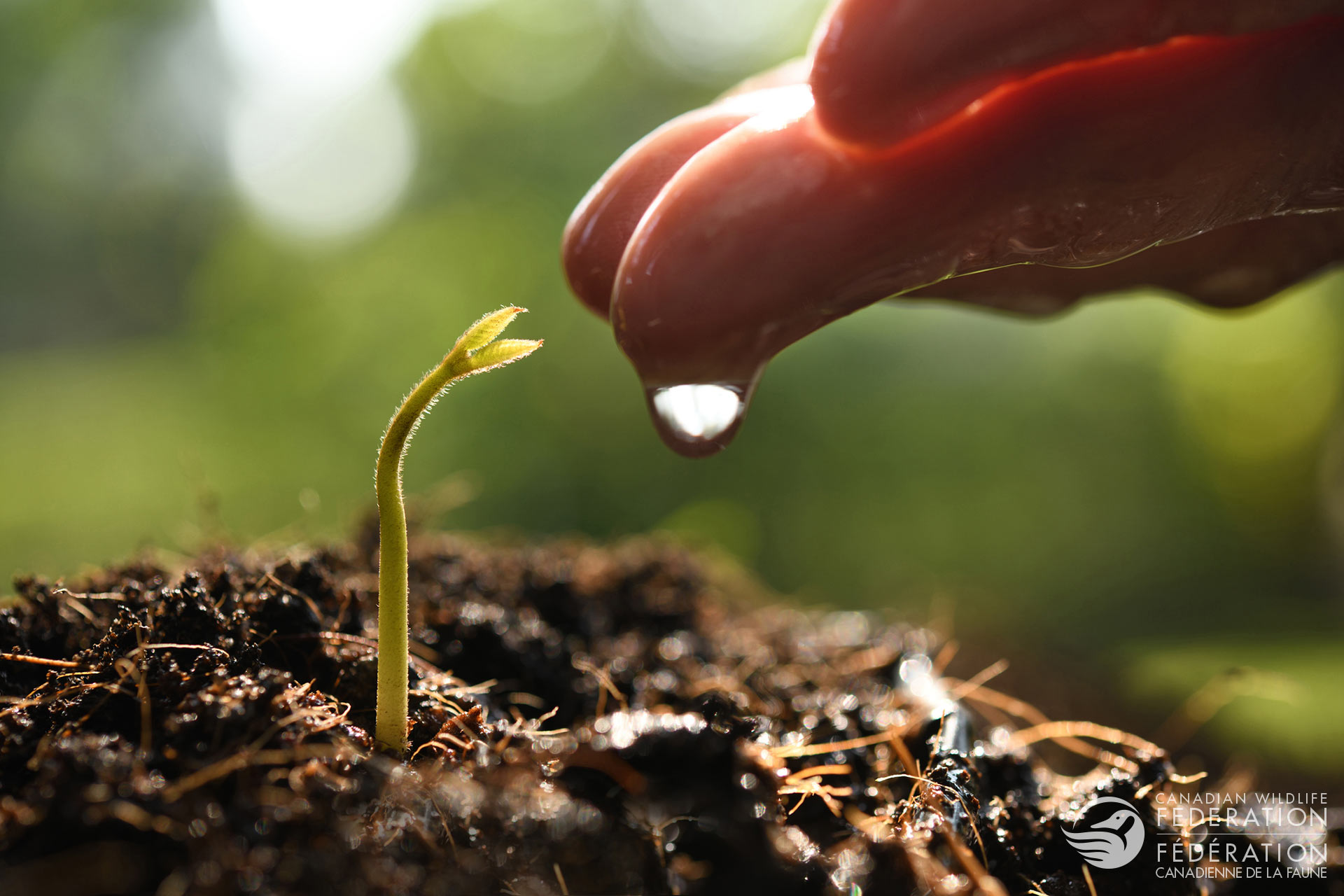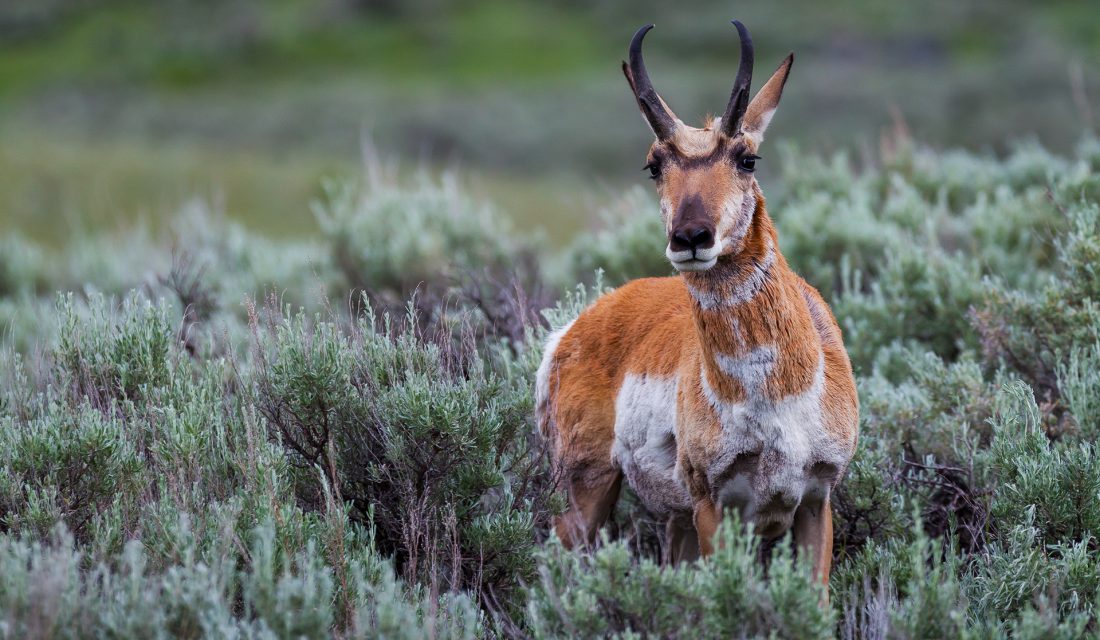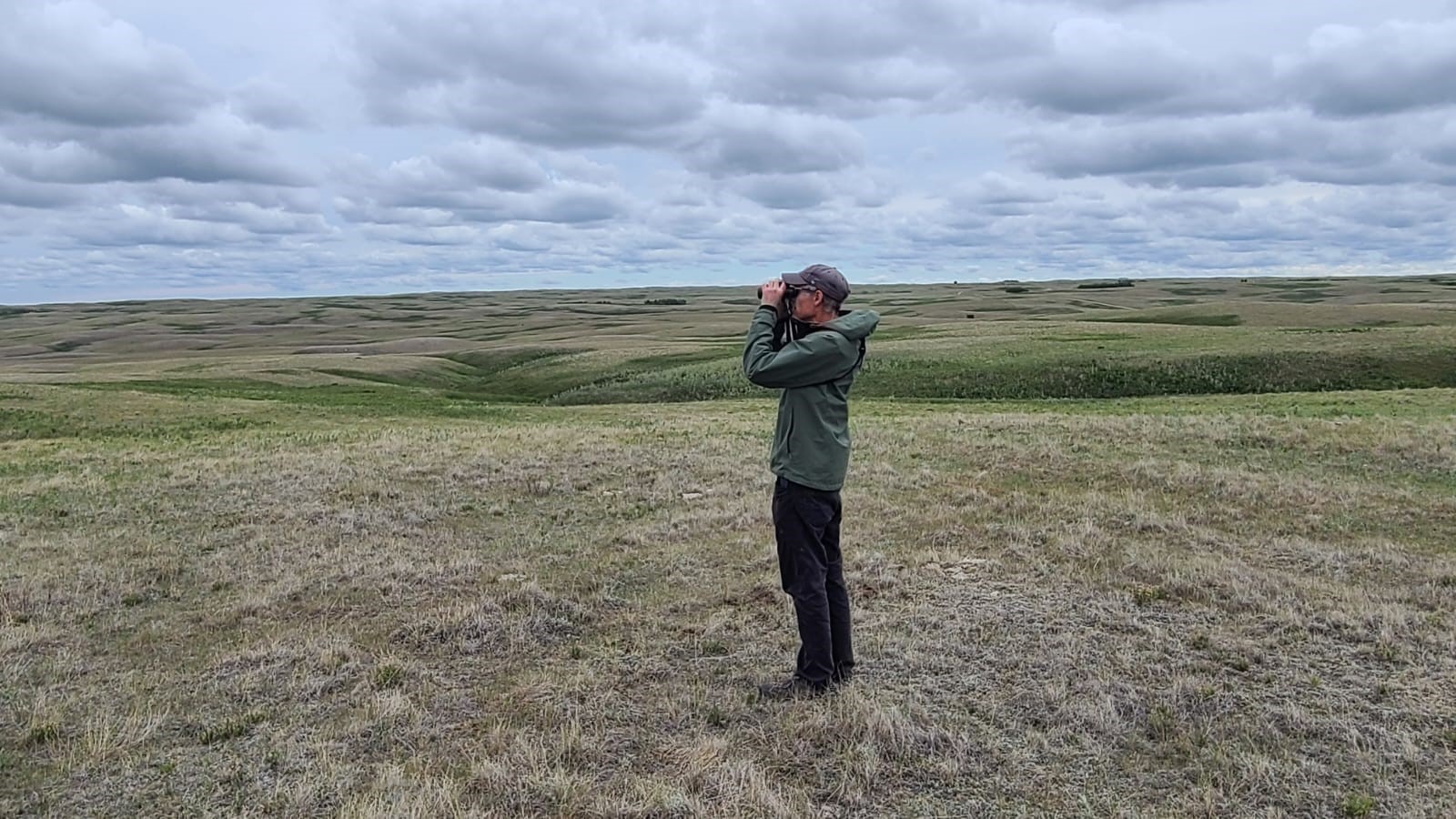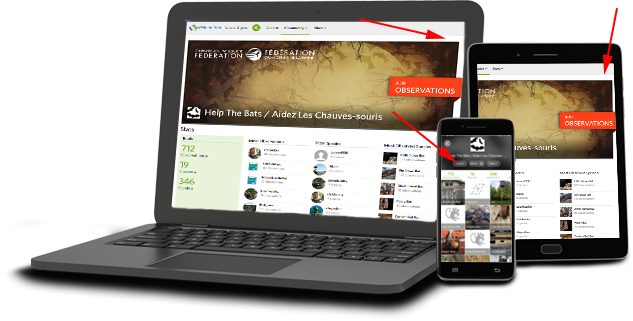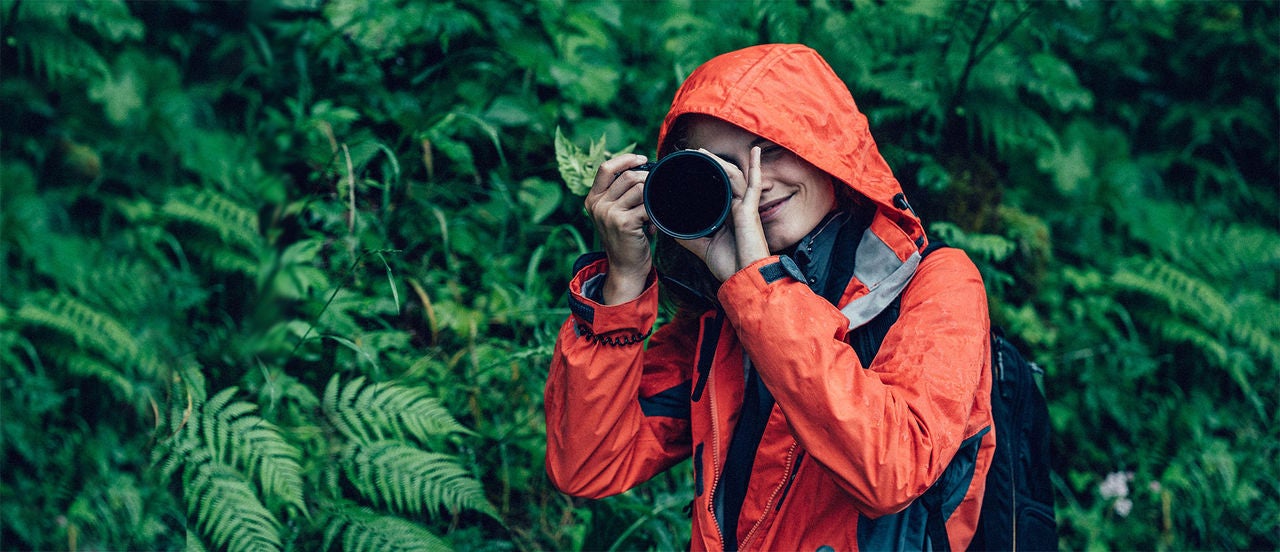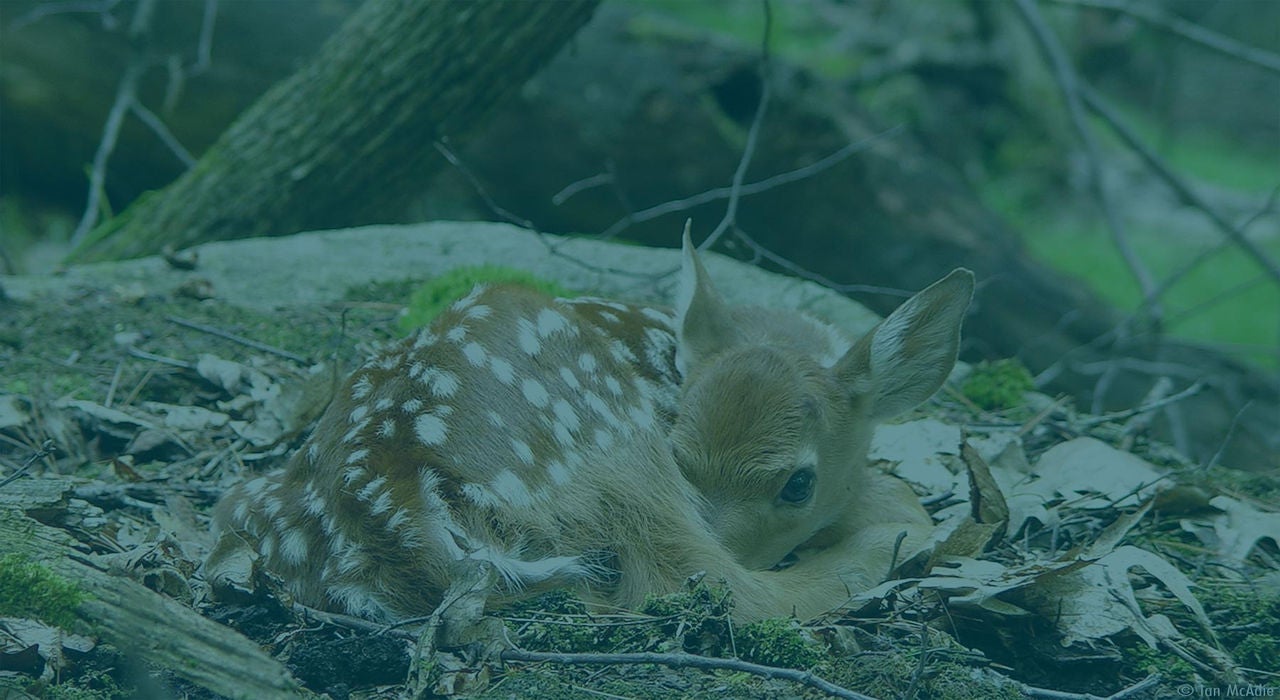Welcome to our CWF Great Canadian Bioblitz Participation Guide.
Here you’ll find all the information you need to be successful in your efforts to upload as many different species observations as you can during the Great Canadian Bioblitz September 21 through 28, 2025. Not sure how to participate? Get the steps > Practice what you learn so you’ll be ready to track diversity wherever you are in Canada.
Where to Look for Observations?
Participating in the CWF Great Canadian Bioblitz is a fantastic way to connect with nature and contribute to our understanding of Canada’s biodiversity. No matter where you are, there are countless opportunities to observe and record the fascinating species around you . Check out the guide below on where to look for observations, tailored to specific habitats and situations, to help you make the most out of your bioblitz experience. Or, download the PDF of the CWF Great Canadian Bioblitz Observation Guide >
Gardens, Flower Beds and Potted Plants
Look closely at flowers and plants for insects like bees, butterflies, and beetles. You might find caterpillars on leaves or spiders building webs among the stems. When recording plants focus on wild species (even if they’re not native) rather than those that are obviously cultivated.
Trees and Shrubs
Check trees and bushes for birds and squirrels, especially in the early morning or late afternoon. Look under leaves and on branches for insects like caterpillars, beetles, and aphids, even galls or chew patterns can sometimes be identifiable to species. Examine the bark for fungi, moss and lichens, and you might spot ants or other tiny creatures. And, of course, you can record the tree itself.
Have a Listen
Remember sound recordings count too. Birds can be heard throughout our urban areas, each can be identified by their call. Even cicadas, frogs and toads can be heard in many urban environments and identified by their call.
Lawns and Ground Cover
Walk slowly and look down at the grass for ants, earthworms, and ground beetles. Mushrooms often pop up in damp, shady spots, and moss can be found in moist areas. Turn over rocks or logs to find hidden insects or small amphibians. There are also many naturally growing flowers that can be visible amongst the grass – remember even non-native plants count, as long as they weren’t planted by humans.
Buildings and Structures
Examine the sides of buildings, windowsills, and eaves for spiders, wasps, and birds' nests. Look in corners and crevices for signs of animal activity. Normally it’s best to turn off outside lights to minimize impacts to nighttime species, in this rare occasion, porch lights can be left on to attract moths and other nocturnal insects.
Water's Edge
Explore the shallow water and edges of ponds, lakes, and rivers. Many different plants can be found here that don’t grow in other areas – and not just on the shore, there are floating and underwater plants too! Look for frogs, tadpoles and small fish. Check the mud and rocks for snails and aquatic insects. Dragonflies and damselflies are commonly seen flying over the water or resting on vegetation. Observing at different times of the day can reveal various species, as some are more active in the morning or evening.
Reeds and Grasses
Insects such as dragonflies and damselflies are common here, and you might spot spiders building webs among the stems. Binoculars can help you spot birds hidden in the reeds.
Mudflats and Sandy Shores
Look for animal tracks in the mud or sand. Mammals can often be identified from a photo of the track. Turn over rocks and shells to find hidden creatures. Early morning is a good time to observe shorebirds feeding.
Underwater
Use a net to scoop up water and check for small aquatic animals like fish, crayfish, and insects. Be careful not to disturb the habitat too much and be sure not to overexpose them to air. A magnifying glass can help you see smaller organisms.
Rocks, Logs and Floating Vegetation
Observe plants like water lilies and duckweed — frogs, insects and small fish often hide among the floating leaves. Gently part the vegetation to spot hidden species beneath. Scan rocks and logs for turtles or snakes basking – binoculars and a digital camera with a zoom are particularly helpful.
Have a Listen
Remember sound recordings count too. Wetlands are an oasis for birds with numerous species belting their own distinct song. Just like birds, each frog species has its own call and can be heard throughout most wetlands.
Forest Floor
Walk slowly and look down. You’re sure to find mushrooms, ferns and other plants or ground-dwelling insects. Turn over fallen barked logs, and rocks to discover salamanders, beetles, and other small creatures (be sure to gently replace anything you’ve turned over). Mushrooms often pop up after rain, and moss can be found in moist areas. Look for signs of mammals like tracks and scat .
Trees Trunks and Bark
Examine the bark for fungi, moss, and lichens. Look closely for insects like ants, beetles, and spiders. You might find spider webs tucked into crevices or beetles crawling up the trunk. Trees can often be identified by their bark, but it’s better to also get a photo of the leaves.
Canopy
Use binoculars and digital camera with a zoom to capture species up in the trees. Birds and squirrels are often active in the canopy, especially early in the morning or late in the afternoon. Listen for bird calls to help locate and identify them, or simply upload a sound recording as your observation. Look for nests and observe the leaves for signs of caterpillars and other insects.
Leaf Litter
Gently sift through the leaf litter on the forest floor. You might find decomposers like earthworms, beetles, centipedes and millipedes. Amphibians like forest-dwelling frogs and salamanders may hide amongst the leaf litter.
Streams and Rivers
Explore the edges of streams and rivers for aquatic plants, fish, and insects. Look under rocks and along the banks for crayfish and amphibians. Use a small net to catch and observe aquatic creatures like dragonfly nymphs and small fish. Watch for birds like kingfishers and herons hunting along the water’s edge. Look for animal tracks in the mud along the banks, which can reveal the presence of deer, raccoons, or other wildlife.
Tall Grasses and Wildflowers
Grasslands and open areas will have sun-loving plants to record, that you may not see in shaded areas. Some may be thought of as weeds, but still valuable to capture. Walk slowly through the grass, looking and listening for insects like butterflies, bees and grasshoppers. Pay attention to the flowers, as they attract pollinators like bees and butterflies.
Ground Level
Search for ants, beetles, and other ground-dwelling insects. Look under rocks and logs for hidden animals like snakes and lizards – these are often seen basking in open, sunny areas as well. Be cautious when lifting rocks and logs to avoid disturbing the animals too much and always gently replace them.
Shrubs and Bushes
Check bushes and small trees for birds, insects and small mammals. Many animals use these plants for shelter and food. Look for signs of feeding, like chewed leaves or fruits, which indicate that insects or small mammals are nearby. Spiders may also weave their webs between the branches.
Open Fields
Scan the horizon for larger mammals like deer and coyotes. Birds of prey such as hawks and eagles can often be seen hunting in open fields and songbirds among the vegetation or perched nearby. Use binoculars and digital camera to get a closer look at distant animals. Early morning and late afternoon are the best times to observe mammals, as they are most active during these cooler parts of the day. Look for signs like tracks and droppings.
Videos
Here are some helpful videos to demonstrate how easy it is to participate in the CWF Great Canadian Bioblitz

PDFs
Check out all the great resources we have up together to help you participate. Find them on iNaturalist.ca: iResources · iNaturalist Canada >
- iNaturalist Photo Guide: Tips, tricks, and guides to help get your sightings identified
- Arachnids: How to Take Identifiable Photos
- Birds: How to Take Identifiable Photos
- Butterflies & Moths: How to Take Identifiable Photos
- Fish: How to Take Identifiable Photos
- Mammals: How to Take Identifiable Photos
- Plants: How to Take Identifiable Photos
- Turtles: How to Take Identifiable Photos
- 0
- 1
